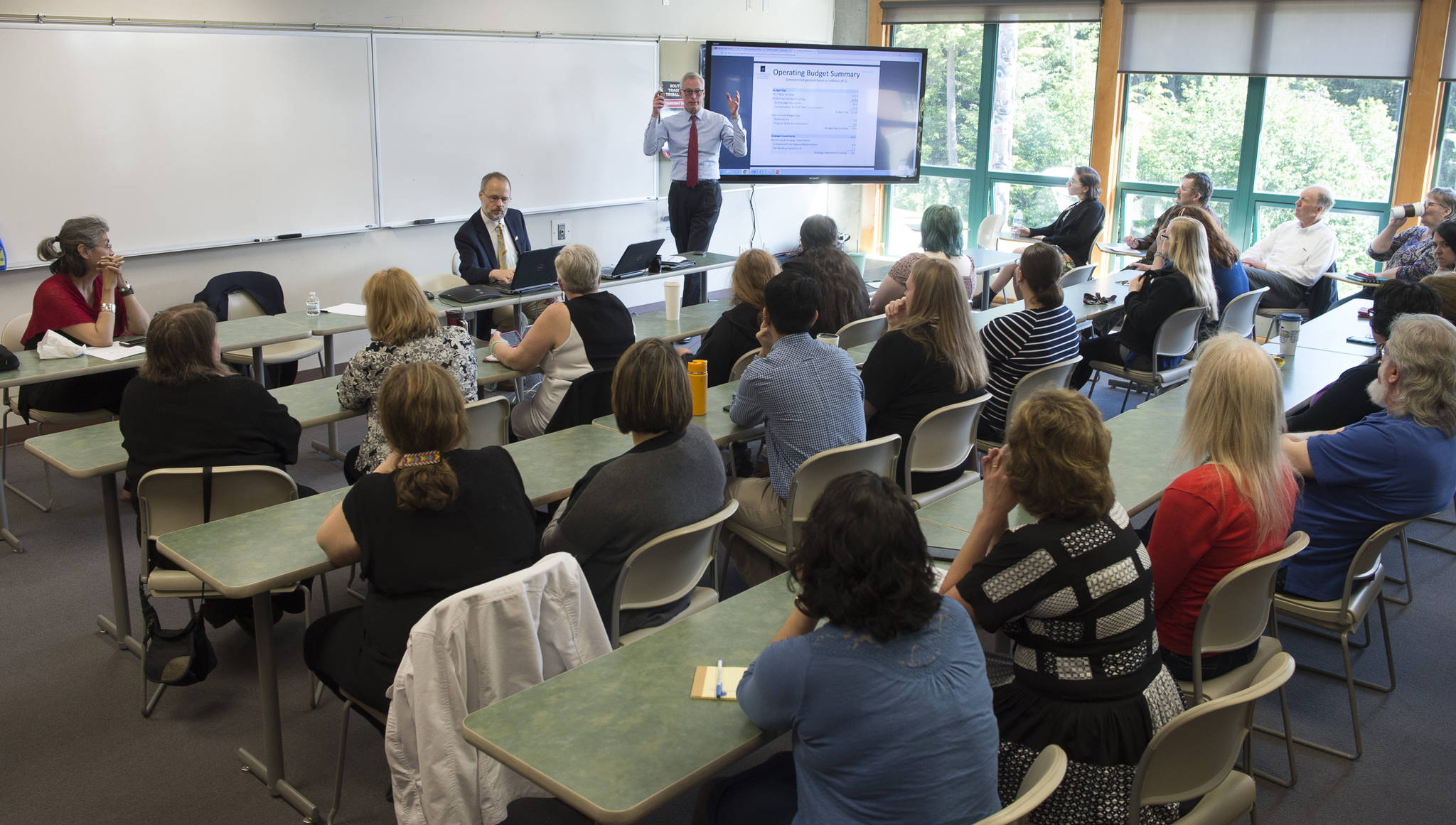Less than a day after the Alaska Legislature reached a budget deal to avert a government shutdown, University of Alaska President Jim Johnsen held a forum at UAS to discuss the university’s budget with students, faculty and staff.
“I’m feeling relieved,” Johnsen said. “Because it’s not $303 (million cut from the budget), it’s not the cut that it could have been and we don’t have an interruption of our operations. That’s really critically important for our ability to serve our state and our students.”
Johnsen visited the UAS campus to discuss the recent $8 million cut announced by the Legislature Wednesday evening and share his plans on how to absorb these cuts and continue to build a strong university.
Before the operating budget vote Thursday evening, the university was also planning a contingency plan on how to continue operations in the absence of an official state budget.
“That’s off the table now, which is why I’m relieved,” Johnsen said. “I didn’t like the $303 (million) number and I didn’t like having to go through this process.”
As Johnsen visits campuses to discuss the budget cut, UAS Chancellor Rick Caulfield is traveling to Seattle to visit with private donors in hopes of securing additional funding for the university.
“In the face of state cuts, we’re trying to raise funding by other means,” Caulfield said. “It’s a serious challenge because it’s a cumulative effect of now four and five years. We’ve seen 18-21 percent reduction in our general fund at UAS over the past four years.”
Last fiscal year, UAS lost 32 positions over the three campuses in Juneau, Sitka and Ketchikan. This year, Caulfield anticipates at least another six to eight position cuts.
“None of these are easy losses,” Caulfield said. “All of this has an effect on our mission in student learning and student success. We’ve worked hard to minimize the impact on the instruction that our students received. The biggest impact will probably be on staff positions we have, which means we will not be able to provide the same services we’ve been able to provide before in places like advising and financial aid.”
In an effort to absorb these cuts, UAS has cut its school of management, continuing a business major through the school or arts and sciences, as well as listed for sale its administrative services bookstore building near Auke Bay.
“We’re trying to reduce our overall facilities footprint and reduce utility costs,” Caulfield said.
While an operating budget has been agreed upon, the House and Senate have yet to pass a capital budget. Until that time, the university’s state contribution of $317 million for fiscal year 2018 isn’t set in stone.
“[We’re hoping for] as much as we can get,” Johnsen said. “We came in at $325 (million), that’s where the governor was, that’s where the House was. So I’m hopeful that we can get back there.”
If the current $8 million cut holds, UAS is looking at an overall reduction of $400,000-$600,000 for the coming fiscal year, according to Caulfield.
“There’s some hope that we might see a little money for the university from the capital budget,” Caulfield said. “We don’t know what the final figures are going to be. Those are the challenges we face.”

